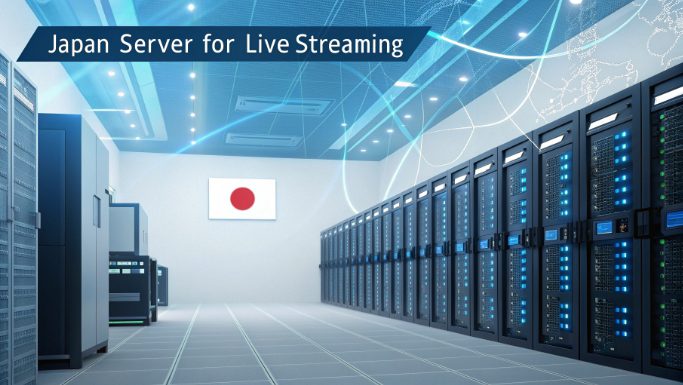How to Choose the Best Japan Server for Live Streaming

In the rapidly evolving landscape of live streaming technology, selecting the right Japan server infrastructure has become a critical decision for tech professionals. With Japan’s advanced digital infrastructure and strategic location in Asia, leveraging Japanese servers for streaming operations can significantly enhance your broadcasting capabilities. This comprehensive guide dives deep into the technical aspects of choosing optimal Japanese servers for various live streaming scenarios.
Key Technical Considerations for Japanese Streaming Servers
Before diving into specific configurations, let’s analyze the crucial technical parameters that influence server performance for streaming applications:
- Network throughput capacity and bandwidth allocation
- Server response time and latency metrics
- CPU architecture and thread handling capabilities
- Memory management and caching mechanisms
- Storage I/O performance and SSD configurations
Analyzing Japanese Data Center Locations
The geographical positioning of your streaming server plays a crucial role in optimizing content delivery. Japan offers several strategic locations:
- Tokyo (TYO1) – Primary carrier-neutral facility with extensive connectivity
- Tokyo (CC1) – Secondary facility optimized for content delivery
- Osaka (OS1) – Regional redundancy with excellent disaster recovery capabilities
- Fukuoka – Emerging hub with proximity to South Korea
Technical Specifications and Performance Metrics
When evaluating Japanese streaming servers, focus on these critical performance indicators:
- Network Performance:
- Minimum 10Gbps uplink capacity
- Multi-carrier BGP routing
- Sub-100ms latency to major Asian markets
- DDoS protection with up to 10Tbps mitigation
- Hardware Requirements:
- Latest Gen Intel Xeon or AMD EPYC processors
- Minimum 64GB ECC RAM
- NVMe SSD storage arrays
- Hardware RAID configuration
Optimizing Server Configuration for Different Streaming Scenarios
Different streaming applications require specific server configurations. Here’s a detailed breakdown based on use cases:
- Gaming Stream Configuration:
- CPU: AMD EPYC 4585PX (32 cores/64 threads, 3.9GHz Max Boost)
- L3 Cache: 128MB
- TDP: 200W
- PCIe 5.0 support
- RAM: 128GB DDR5-4800 ECC
- Storage: 2x 2TB NVMe Gen4 in RAID 1
- Network: 25Gbps dedicated uplink
- Recommended Location: TYO1
- CPU: AMD EPYC 4585PX (32 cores/64 threads, 3.9GHz Max Boost)
- Enterprise Broadcasting:
- CPU: AMD EPYC 7713 / 7C13 (64 cores/128 threads, 3.675GHz Max Boost)
- L3 Cache: 256MB
- TDP: 225W
- 8-Channel DDR4 support
- RAM: 256GB DDR4-3200 ECC
- Storage: 4x 2TB NVMe Gen4 in RAID 10
- Network: 40Gbps redundant uplinks
- Recommended Location: CC1 with OS1 failover
- CPU: AMD EPYC 7713 / 7C13 (64 cores/128 threads, 3.675GHz Max Boost)
Performance Monitoring and Analysis Tools
Implement comprehensive monitoring solutions to maintain optimal streaming performance:
- System-level monitoring:
- Prometheus + Grafana dashboards
- Node_exporter for hardware metrics
- Custom SNMP monitoring
- Real-time CPU frequency scaling analysis
- Network monitoring:
- PRTG Network Monitor
- LibreNMS for bandwidth analysis
- Custom NetFlow collectors
- Packet loss and jitter tracking
Cost-Performance Analysis
Understanding the cost implications of different configurations is crucial for ROI optimization:
- Entry-level Streaming Setup:
- Single AMD EPYC 4585PX configuration
- Cost tier: Entry-level enterprise
- Bandwidth allocation: Fixed monthly quota
- Suitable for: Gaming streamers, medium-scale content creators
- Enterprise-grade Configuration:
- Dual AMD EPYC 7713 setup with redundancy
- Cost tier: Premium enterprise
- Bandwidth allocation: Unlimited with fair usage policy
- Suitable for: Large-scale broadcasting, corporate streaming
Security and DDoS Protection Measures
Implement these security protocols to protect your streaming infrastructure:
- Network Security:
- Layer 7 DDoS mitigation
- BGP blackhole routing
- Traffic scrubbing centers in TYO1 and CC1
- Anti-spoofing filters
- Application Security:
- Web Application Firewall (ModSecurity)
- SSL/TLS 1.3 encryption
- Token-based authentication
- IP reputation filtering
Troubleshooting and Maintenance
Establish these maintenance protocols for optimal performance:
- Regular Health Checks:
- Weekly SMART monitoring for NVMe drives
- Monthly memory stress testing
- Quarterly firmware updates
- Semi-annual hardware inspections
- Emergency Procedures:
- Automated failover protocols
- 24/7 technical support access
- Backup stream ingestion points
- Disaster recovery procedures
Future-Proofing Your Streaming Infrastructure
Consider these factors for long-term scalability:
- Hardware Upgradability:
- CPU socket compatibility for next-gen processors
- PCIe expansion capabilities
- Memory upgrade paths
- Storage expansion options
- Network Scalability:
- 100GbE upgrade options
- Multi-region expansion capability
- Cross-connect potential
- Additional IP allocation flexibility
Conclusion and Recommendations
Selecting the right Japanese server for live streaming requires careful consideration of multiple technical factors. Focus on your specific use case requirements, whether it’s gaming streams, enterprise broadcasting, or content delivery. The combination of proper hardware configuration, strategic data center location, and robust network architecture will ensure optimal streaming performance. Remember that Japanese server hosting and colocation services offer distinct advantages for Asian market reach and technical excellence.

